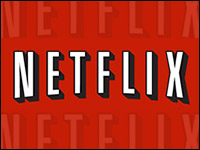
Netflix announced a reshuffling of its prices Tuesday, separating its DVD and streaming plans into two separate subscription packages and angering a large part of its customer base. New customers will need to pick from the company’s new offerings immediately; existing members will be transitioned to the new plans starting Sept. 1.
The company is touting its “lowest price ever” — a US$7.99 plan that allows customers to check out one DVD at a time. The price matches the one offered for access to the company’s streaming video library. Individually, those prices are the same or lower than current offerings, but customers used to be able to receive the bundle package for $10. Now, if a user wants to continue with both streaming and DVDs, the price would jump to a minimum of $16 per month.
Customers who want to pay less will have access to fewer options, critics say, and those who want to continue to stream and get DVDs via mail will see up to a 60 percent price hike.
The pricing reflects the company’s efforts to continue to serve the demand for DVDs while being able to offer a wider selection of streaming content, according to Netflix.
“By better reflecting the underlying costs and offering our lowest prices ever for unlimited DVD, we hope to provide a great value to our current and future DVD-by-mail members,” said Andy Rendich, Netflix chief service and operations officer.
Netflix did not respond to the E-Commerce Times’ requests for further comment by press time.
Why the Changes?
Since Netflix’s introduction of its over-the-Internet video streaming option, its selection of on-demand video has lagged far behind the selection that can be found in its library of physical DVDs. If the company intends to lead the streaming video market, Netflix will likely need to increase its content and capabilities — both of which would come at a cost.
“At some point they were going to have to raise the prices. Streaming is going to cost them more, especially as they’re going to have to renew some content deals,” Michael Corty, analyst at Morningstar, told the E-Commerce Times.
Streaming content has been talked about as an up-and-coming online moneymaker for years, but often it was expected that companies with entertainment content and infrastructure in place would be the innovators in the field.
Instead, independent companies like Netflix and Hulu, an online streaming service that has exclusive mainstream content and is nearing over 1 million paid subscribers, have emerged on the scene.
“What they’ve done in a sense is use the public as a test bed for streaming services, providing it as a free addition to a standard Netflix DVD rental, and it gave them enough time to work the bugs out of the system and also to create appetite for those features,” Charles King, principal analyst at PundIT, told the E-Commerce Times.
To keep up, Netflix will need to up its game, and increased revenue is crucial to that.
“This is part of building this streaming business, getting better and newer streaming capabilities and making sure it isn’t so limited,” Corty told the E-Commerce Times.
The separation between DVD and streaming services could also work to Netflix’s benefit when courting content providers in the future. As the company tries to expand its streaming library and renegotiate content deals with entertainment studios in the future, providers will most likely want to get a cut specifically from revenue made off of streaming subscriptions.
“If there’s already a separate bucket for people who are only paying for streaming only, it helps them to know which is which when dealing in these negotiations,” said Corty.
Angry Users
Netflix is already seeing customer backlash in the blogosphere and social media sites. Despite Netflix’s reasoning, critics say the realigned set of offerings amounts to a steep price hike for many customers.
“The move is counter-intuitive in a way. We’re in a tough economy, people are pinching pennies and there’s a lot of financial uncertainty,” King said.
Still, the move is unlikely to cause a mass consumer exodus, given that the service is still relatively inexpensive compared to alternatives.
“From a value standpoint, Netflix is completely justified. If customers are not happy they’re welcome to go somewhere else. But the alternatives being standard cable service, or trying to assemble entertainment piecemeal from movie company websites or services like Hulu, you end up working harder to get less than you would,” said King.
The most likely users to drop the service or transfer to a smaller plan are customers who subscribe to Netflix in addition to cable TV or another streaming subscription service. For users who use Netflix as their primary source of entertainment, however, the cost difference is still significantly lower than the content they could get from other sources.
Netflix is likely well aware of the hit the company will take and is prepared for a small subscriber dip.
“There’s always been lower-price options, and I think Netflix realizes there is going to be customer defections because of this, but they’re probably counting that the price increase will kind of offset that. The company is still growing, they have a growing and changing business model, and with that you’re going to have some dynamic pricing, but they’ve got good insight into their customers,” said Corty.
That evolving business model could ultimately help the company to expand and keep its leading status in the online streaming world.
“It’s an interesting strategic move on their part, as they move more proactively into media production and distribution. This is a company that is actively transforming the way users consume entertainment,” King told the E-Commerce Times.






















































Social Media
See all Social Media